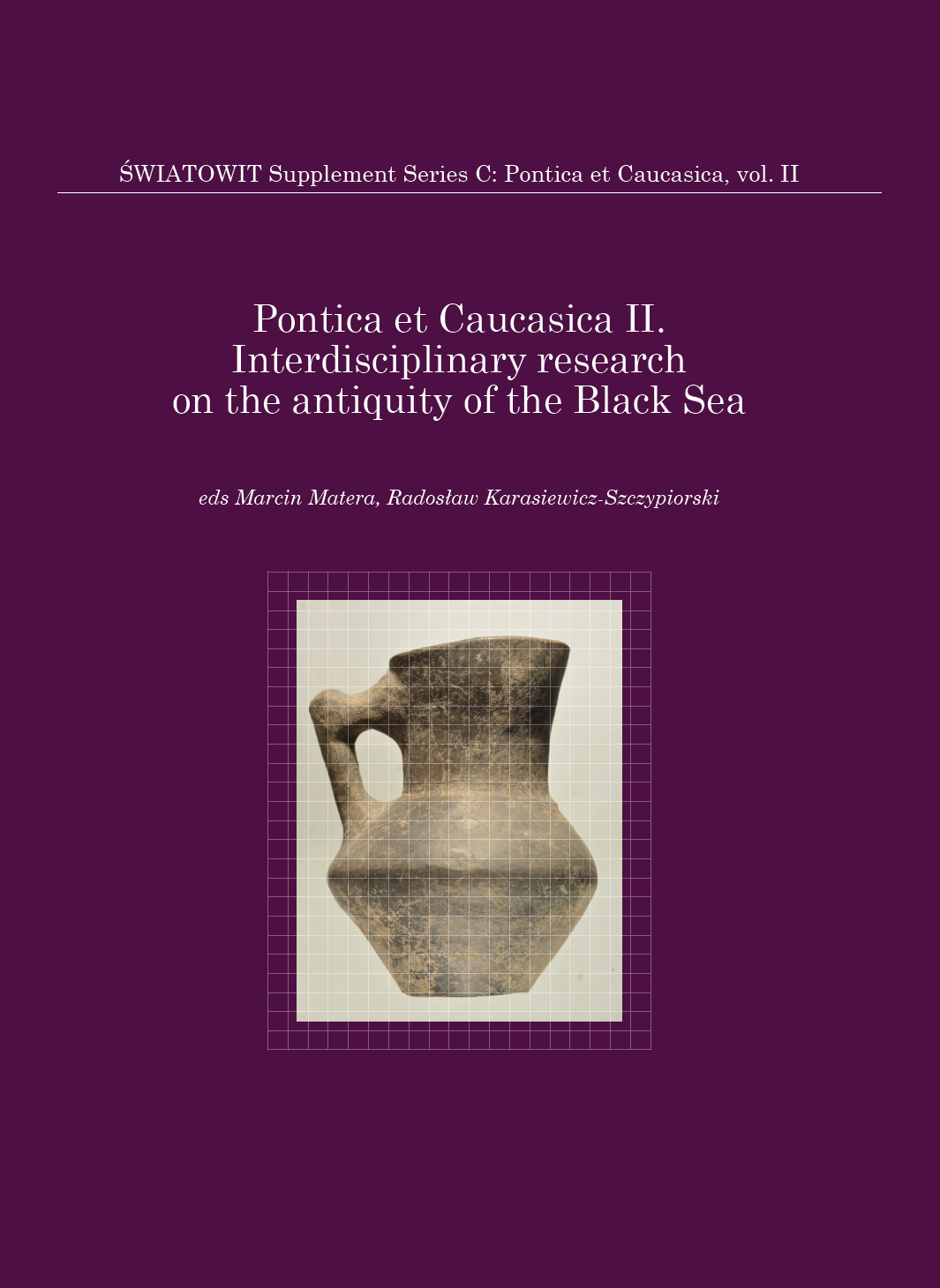Bust "Thymiateria" Most Spread in Pontic Region
Bust "Thymiateria" Most Spread in Pontic Region
Author(s): T. Shevchenko
Subject(s): Archaeology
Published by: Wydawnictwa Uniwersytetu Warszawskiego
Keywords: Olbia Pontica; Ancient Greek religion; temenos; botros; terracotta; bust thymiaterion; goddess’ image
Summary/Abstract: Bust thymiateria, or images of goddesses with almost half a figure and with cups on their heads, are quite common in the Ancient Greek centres of the Black Sea area in the Hellenistic period. Despite their origin in other regions, large number of them were found in Pontic cities, such as in Olbia Pontica, Gordion, Amisos, Tauric Chersonesos, Myrmekion, Odesos, and Callatis, while in Gorgippia and Hermonassa, such items were found one in each. Thymiateria depicted Aphrodite or the participants of Dionysiac cult, rarely Mother of the Gods or Isis. In Olbia, there are several variants of bust thymiateria depicting a goddess without any attributes necessary for cultic image attribution. Terracottas of one of such variants are published and analyzed in this paper. They find their precise analogies among the materials of Callatis and Myrmekion. They are the images of a goddess wearing stephane, which is shown already in the mould, and earrings, with long strands of hair put on the shoulders and without clothes shown. They were found in a single context of the botros at the Eastern (Central) Temenos. This botros was situated not far from the coroplast’s workshop. This fact leads to the assumption that most of them were moved into the botros directly from the workshop and were never used. Peculiarities of the production technology, namely, manually shaped back and similar manner of processing the inner surface and the lower edge evidence that all of them were made by the same coroplast in the mould, perhaps imported, of which only one, the facial, side was available. The question whom the bust thymiateria serially produced in Olbia and known in other Ancient Greek centres of the Black Sea area depicted cannot be flatly answered. It can be only presupposed that considering the finds of bust thymiateria depicting Aphrodite found in the same botros, the lack of clothes, and the attention paid to the jewellery in the image, the terracottas analyzed here also could be related to this cult.
Book: Interdisciplinary research on the antiquity of the Black Sea. Volume II
- Page Range: 337-347
- Page Count: 11
- Publication Year: 2021
- Language: English, Russian
- Content File-PDF

